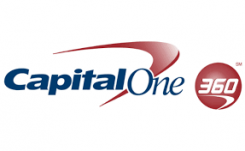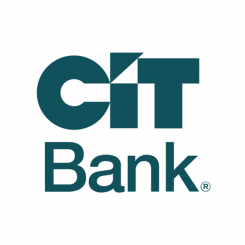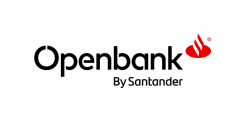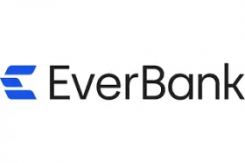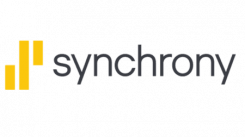- No monthly fees or minimums required
- FDIC-insured up to $250K
- Seamless internal transfers
- Top APY on $5,000+ balances
- Interest paid daily, compounded
- No monthly maintenance fee
- 4.30% APY on all balances
- No monthly fees
- $500 minimum to open
- 4.05% APY on all balances
- Interest compounded daily
- No monthly maintenance fees
- No minimum balance required
- No monthly maintenance fees
- Comes with ATM access card
Features and Benefits
- Best Overall Value: Capital One 360 Performance Savings »
- Best for High APY: CIT Bank Platinum Savings »
- Best for No Fees: EverBank Performance® Savings »
- Best for Large Balances: Openbank High Yield Savings »
- Best for Beginners: Synchrony Bank High Yield Savings »
- Best Intro Rates: Capital One 360 Performance Savings »
- Best ATM Access: CIT Bank Platinum Savings »
- Best for Automated Savings: EverBank Performance® Savings »
- Best for Fast Transfers: Openbank High Yield Savings »
- Best for Joint Accounts: Synchrony Bank High Yield Savings »
Frequently Asked Questions
Question:
What is a high-yield savings account?
Answer:
A high-yield savings account operates similarly to a traditional savings account, with the same fundamental functions (depositing, withdrawing, earning interest), but it offers significantly higher interest rates. These elevated yields are often possible because the accounts are offered by digital-first or branch-light institutions with lower overhead. That means your deposited funds grow faster while still maintaining liquidity for withdrawals or transfers.
Ask an expert: Capital One 360 Performance Savings »
Question:
Is my money safe in one of these accounts?
Answer:
Yes, when the institution is an FDIC-insured bank (or equivalent insurer), deposits up to $250,000 per depositor, per ownership type, are protected—even in the rare event that the bank fails. That insurance covers both your principal and accrued interest, within coverage limits. Because some online platforms operate via partner banks behind the scenes, it’s wise to verify which bank legally holds your deposit and confirm its insurance status.
Ask an expert: CIT Bank Platinum Savings »
Question:
How often do rates change?
Answer:
Most high-yield savings accounts carry variable interest rates, meaning the APY can fluctuate over time based on economic factors, benchmark yields, or internal policy changes. Some deals or account “introductory rates” are promotional and expire after a set period, moving your balance to the standard variable rate. Thus, the “headline APY” at account opening isn’t guaranteed indefinitely.
Ask an expert: EverBank Performance® Savings »
Question:
Are there fees or minimum balances?
Answer:
Many high-yield accounts advertise no maintenance fees and no required minimum balances to maintain the account or earn interest. That said, some require a modest initial deposit to open (e.g., $100). Others may impose thresholds (e.g. a $5,000 minimum) to qualify for the highest APY tier. Always study the fee and balance schedule—some “no-fee” accounts still carry special charges under certain conditions (like wire fees or inactivity fees).
Ask an expert: Openbank High Yield Savings »
Question:
How quickly can I access or withdraw funds?
Answer:
Withdrawal and transfer times typically depend on the method. ACH transfers to external accounts usually take 1–3 business days. If your checking and savings accounts are with the same institution, internal transfers may settle much faster—sometimes instantly or same-day. Be aware that some accounts limit the number of permitted withdrawals per month in certain categories, or impose delays for large transfers.
Ask an expert: Synchrony Bank High Yield Savings »
Question:
What if I want multiple savings accounts?
Answer:
Holding multiple high-yield savings accounts is entirely feasible and often wise for maximizing returns or spreading institution risk. Just monitor FDIC coverage (the $250K cap applies per institution, per depositor, per ownership category). Also consider that multiple accounts may differ in features: transfer speed, minimums, withdrawal rules, and interface. Many users maintain one “core safe” account and one for chasing the highest yields.
Ask an expert: Capital One 360 Performance Savings »
Question:
How do I choose which one is best for me?
Answer:
Don’t rely solely on the highest APY. The “best” option balances yield with fees, minimums, accessibility, and usability. For example, an account offering a slightly lower APY but no fees and faster transfers may deliver better net returns. Evaluate support, mobile app quality, deposit methods, withdrawal flexibility, and the institution’s reputation. Weigh all these attributes rather than rate alone.
Ask an expert: CIT Bank Platinum Savings »
Question:
Can I get ATM access or a debit card?
Answer:
Some high-yield savings accounts offer optional ATM access or a linked card, allowing you to withdraw or use funds more casually. Others are transfer-only, meaning all withdrawals must go through electronic transfer methods. If easy cash access is important to you, verify whether the account includes a card and whether it reimburses out-of-network ATM fees.
Ask an expert: EverBank Performance® Savings »
Question:
How often is interest paid out?
Answer:
In general, interest is credited monthly, while your balance compounds daily. That ensures each day’s balance (and the interest it accrues) contributes to future earnings. Some accounts may use alternate schedules (e.g. quarterly), but monthly crediting is most common in the high-yield savings space. Always check your chosen account’s specific schedule.
Ask an expert: Synchrony Bank High Yield Savings »
